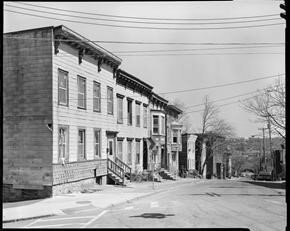Preservation League of NYS Responds to NY Times Article on Historic Preservation
On January 26th, 2020, the New York Times published an opinion piece accusing historic preservation of being “elite” and harming the fight against global warming, among other improper characterizations of the field. Rather than disparaging the work of the preservation community, we suggest that preservationists should be celebrated for their commitment to economic development, community revitalization, and smart, sustainable growth.
As New York’s only statewide historic preservation nonprofit organization, the Preservation League of New York State suggests an alternate view of historic preservation and would like to illuminate how historic preservation benefits communities across New York State. The Preservation League leads advocacy, economic development, and education programs across the state and partners with local preservation organizations throughout New York.
Historic Preservation Is About Telling Everyone’s Story
The Preservation League works tirelessly to preserve communities and cultures. We believe in telling the complete history of a place, including the stories of historically underrepresented communities.
We are grateful we have had the opportunity to bring much needed attention to the Rapp Road Historic District in Albany County, through advocacy including naming the site to our 2016-2017 Seven to Save endangered properties list. The Rapp Road community was founded as part of the early 20th century African American Great Migration from southern to northern communities. The Rapp Road community and the League are working side-by-side to stave off insensitive development.
In Suffolk County, we supported the Bethel Christian Ave/Laurel Hill Historic District, one of our 2014-2015 Seven to Save. This historic Native American and African American community is severely threatened by outside development pressure. Further east in Suffolk County, the League is advocating for the Sag Harbor Hills, Azurest, and Ninevah Subdivisions (SANS) in Sag Harbor as residents attempt to secure local protection for their communities. These post-World War II resort communities were built by African Americans who wished to enjoy the waterfront in an era when Jim Crow housing segregation and mortgage financing discrimination prohibited many people of color from developing and enjoying resort housing.
Historic Preservation Is Environmentally Sustainable
Much has been written about how the greenest building is the one already standing. Indeed, many argue that new construction is environmentally irresponsible. In his editorial, Mr. Appelbaum touches on replacing historic windows with vinyl ones. Studies have shown that properly weather-sealed historic wood windows are equally as energy efficient as modern replacements, without the negative environmental costs and short life cycle of vinyl windows.
Regarding renewable energy and historic preservation, the Preservation League offers several guides to integrating solar panels with our historic buildings and sites. We believe one can balance renewables and preservation standards. Resources regarding placement of solar panels on residences/commercial buildings and large scale solar installation siting can be found on our website.
Preservation is not just about saving aesthetically pleasing buildings or “freezing them in time.” It is about saving the places that tell the stories of individuals and communities. Preservation is a proven driver of economic development, downtown revitalization, job creation, heritage tourism, and increased property values/market stabilization, as recently outlined in Donovan Rypkema’s recent report Twenty-Four Reasons Historic Preservation is Good for Your Community.
The Preservation League continues to work on the front lines of historic preservation, investing in people and projects that champion the essential role of preservation in community revitalization, sustainable economic growth, and the protection of our historic buildings and landscapes. We invite Mr. Appelbaum to learn more about our work and that of our colleagues to expand his very narrow perspective of our expansive and inclusive field.
Albany South End Historic District. Photo credit: Bruce Harvey

